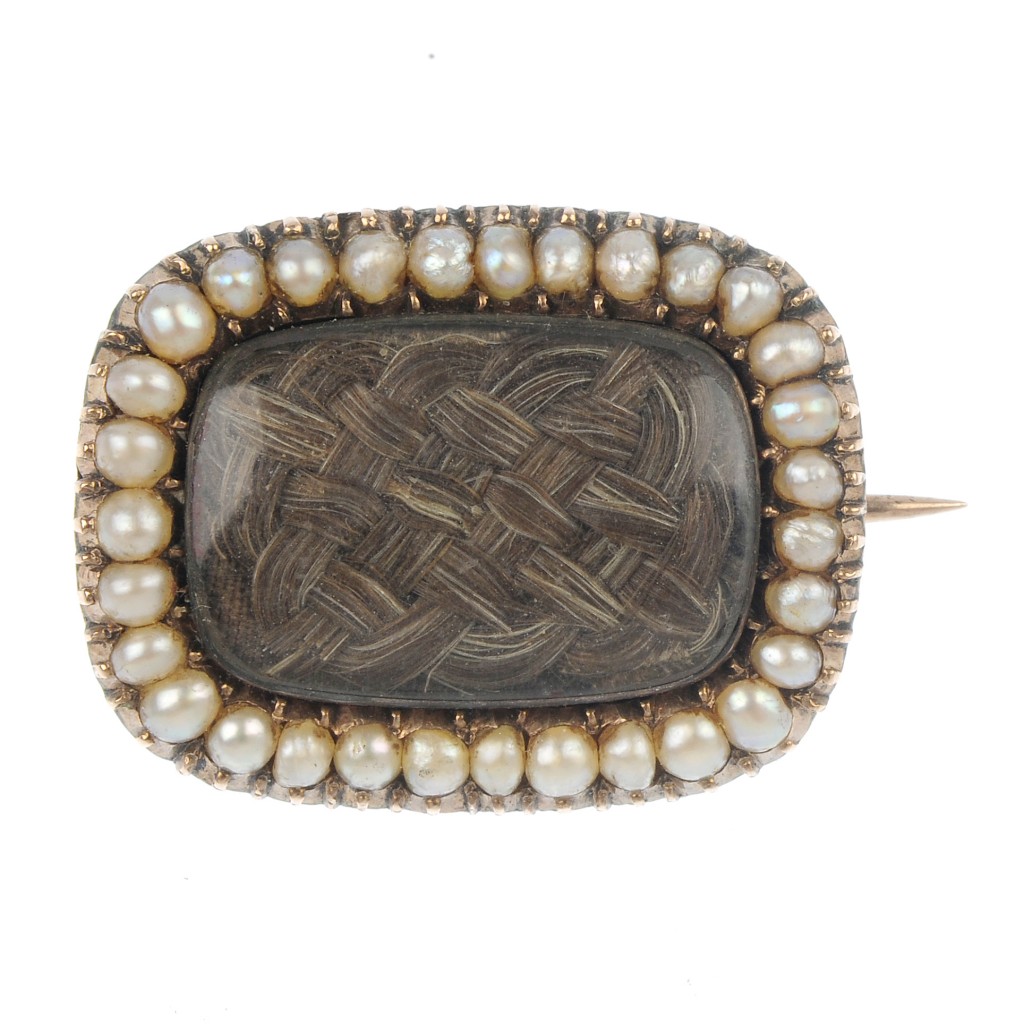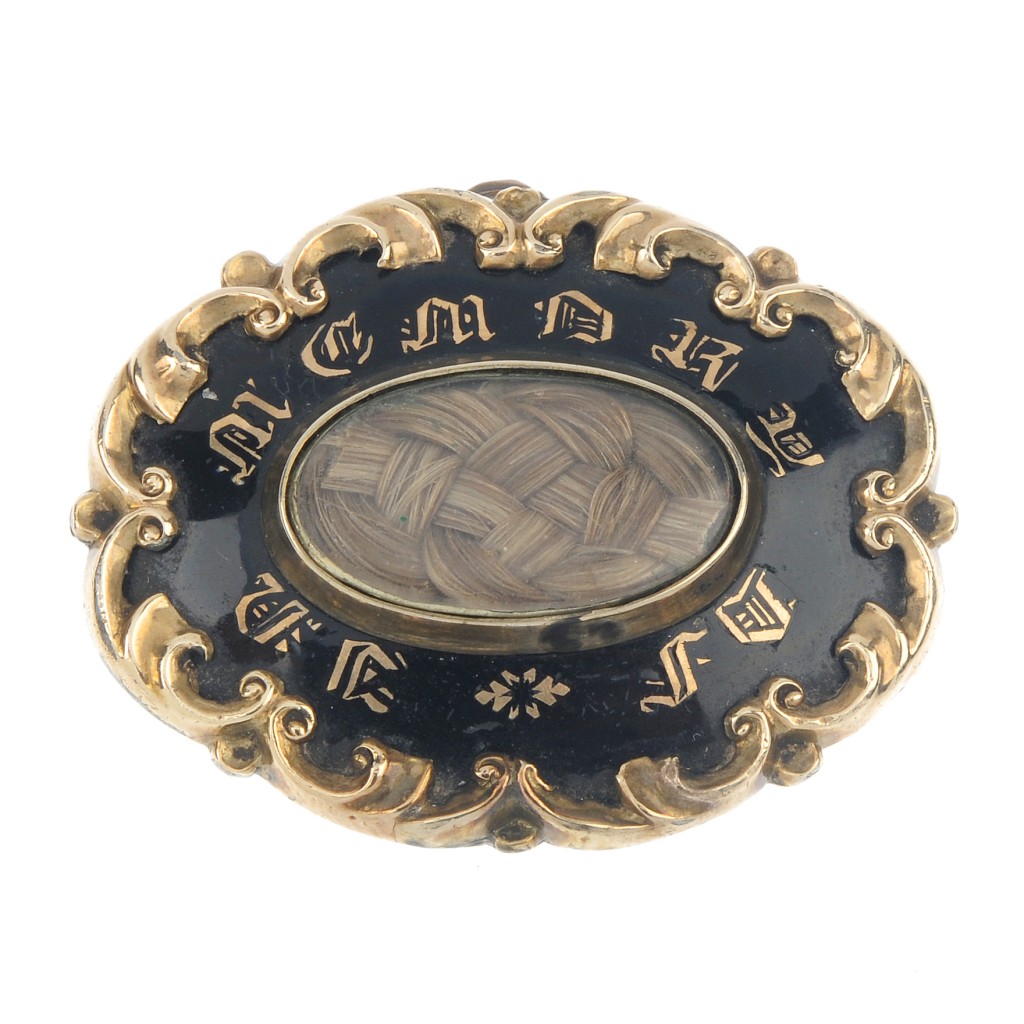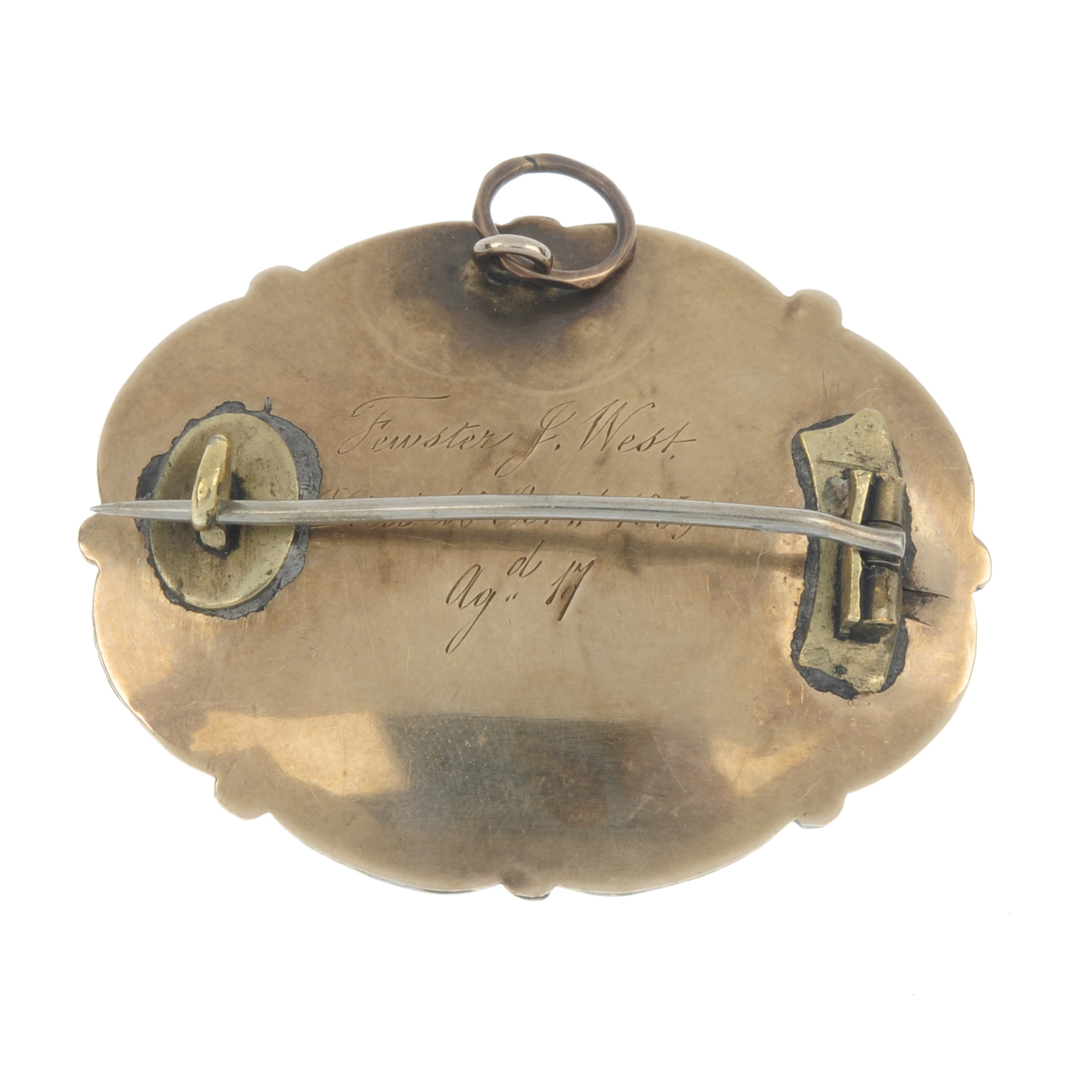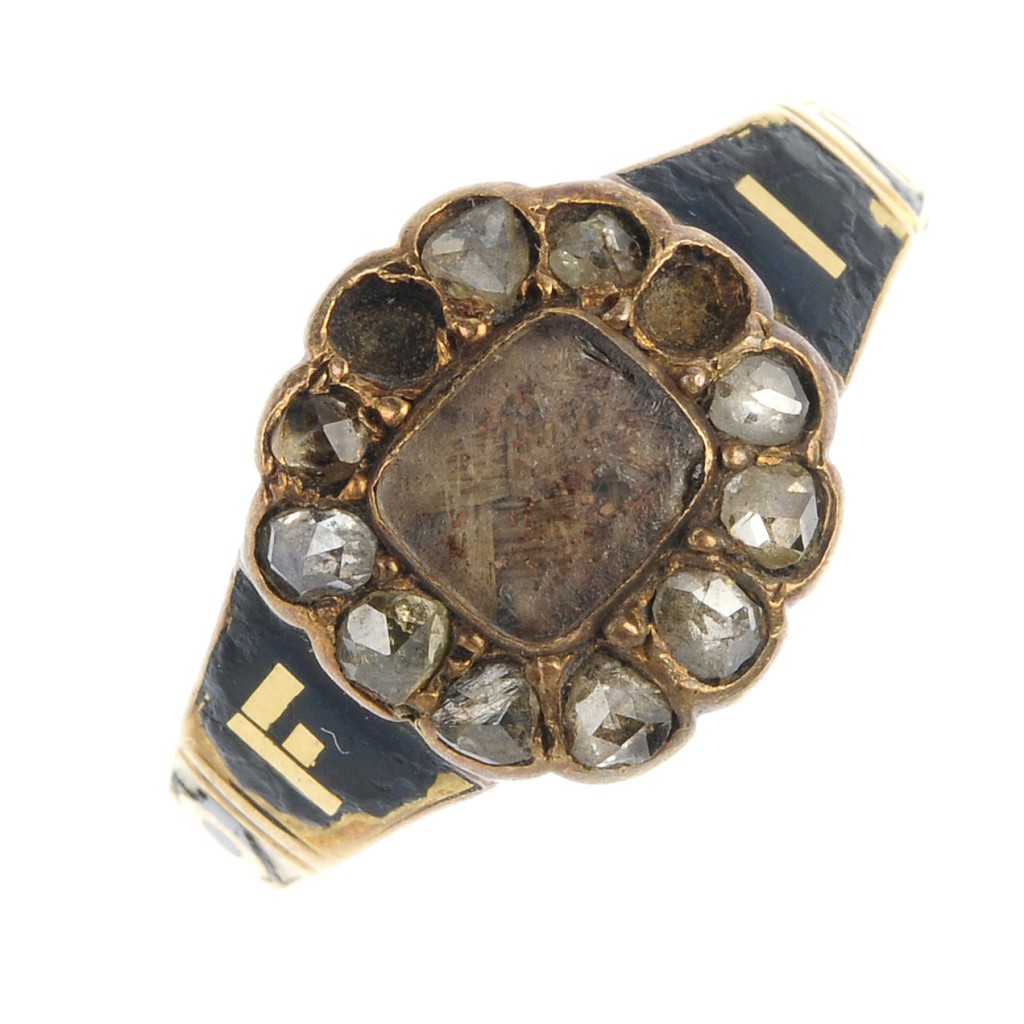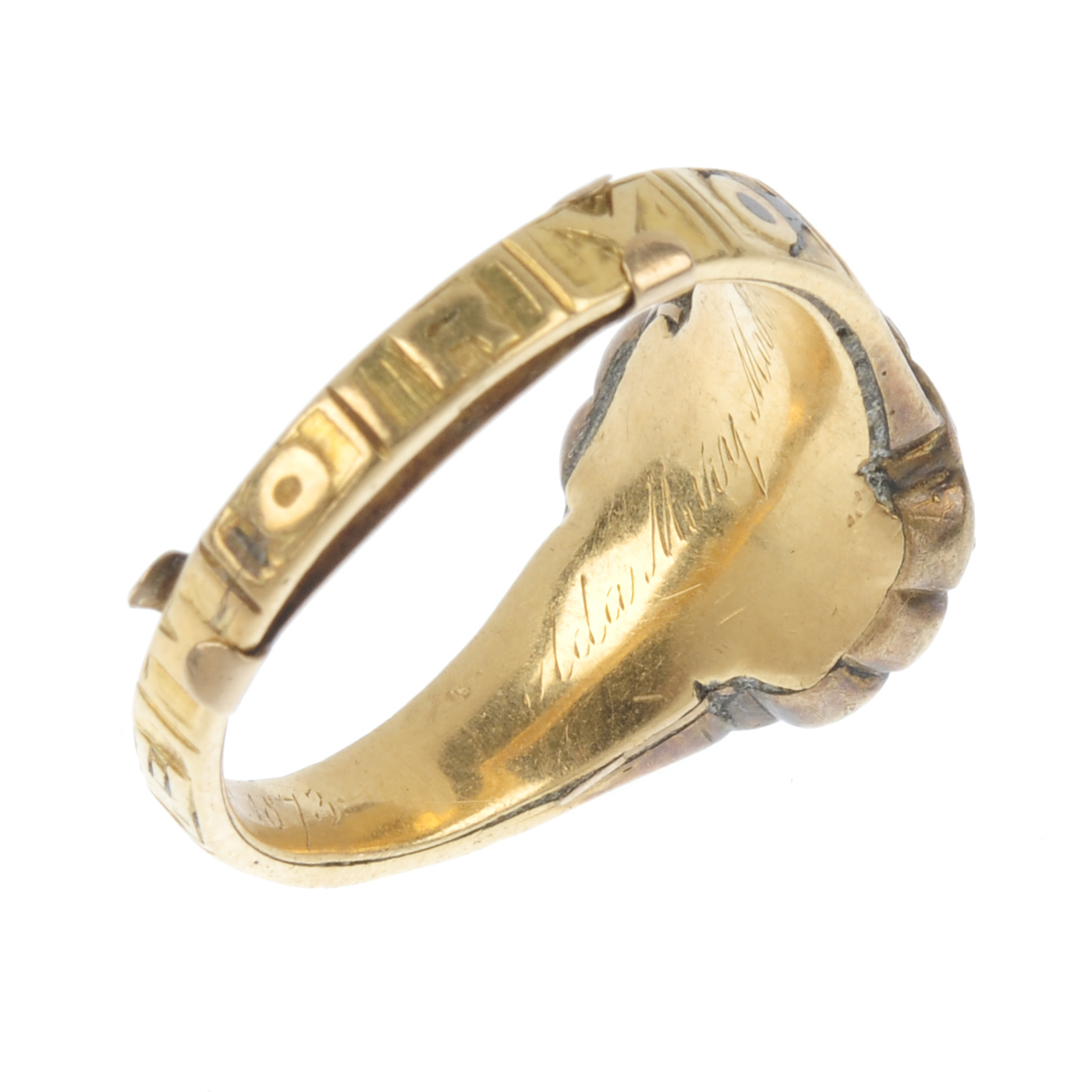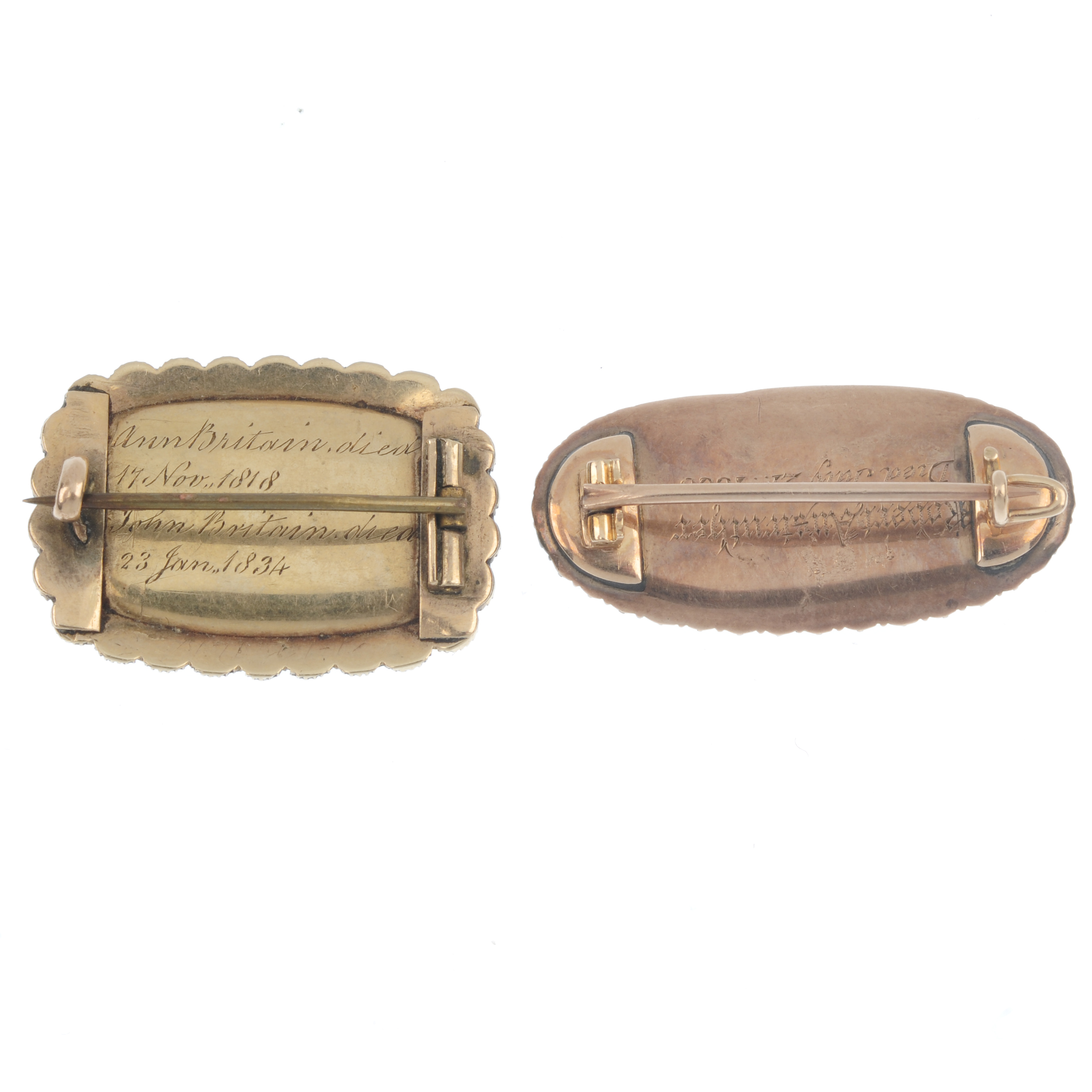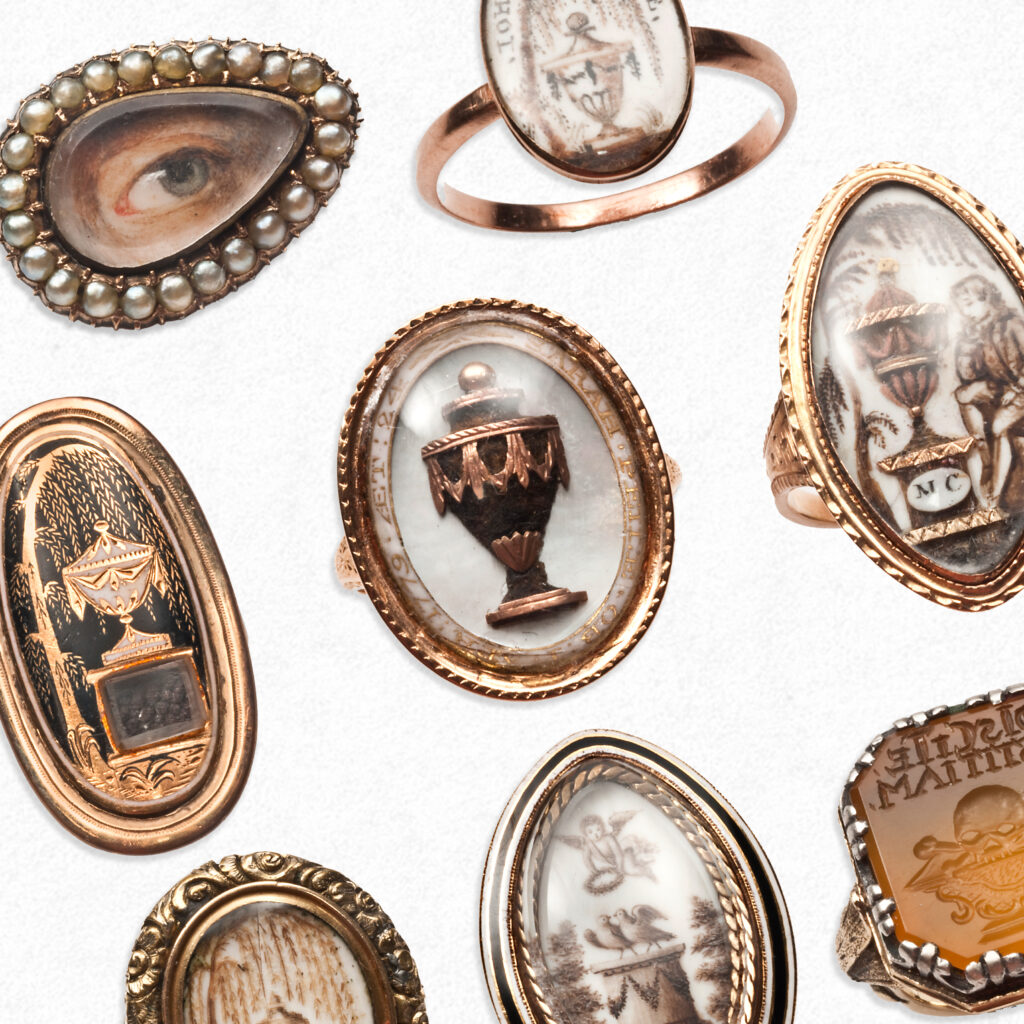Mourning Jewels at Fellows Auctions
Art of Mourning is a celebration of mourning and sentimental jewellery. A resource created to dispel much of the mystique and romanticism about jewellery, while providing a gateway into early-modern history. These jewels are attainable for everyone; anyone can collect by applying knowledge and understanding of the jewel without high premium cost. Fellows auction house, established in 1876, is one such place where new and old collectors can purchase good quality jewels at decent cost.
Today’s Art of Mourning is a collection of pieces from the upcoming March 24th auction, where there are some rather fine mourning and sentimental jewels on display. To assist your viewing of the jewels, I will add correlating links to articles in Art of Mourning where you can learn more about their particular styles.
Lot 101 / £70 – 100 / A mid 19th century split pearl memorial brooch with a rectangular-shape woven hair panel, within a split pearl surround.
Article: Pearl and Blue Glass/Enamel Brooch: How Trade Opened Up New Possibilities in the 18th Century
This article is important to read for the use of pearls and their introduction into the late 18th century. This is the foundation for 19th century pearl use, particularly as the growth of the ‘magical properties of gems’ overtook the Neoclassical depictions of love and used the gems as the symbols of sentimentality. The brooch above would not use pearls s liberally without this look into the past.
___
Lot 104 / £200 – 300 / A mid Victorian 9ct gold memorial swivel brooch, with a double-sided photograph panel to the shaped border inlaid with woven hair.
Article: Beyond Death Do Us Part, High Victorian Brooch
The mid to late 19th century is an important time for the use of brooches. Since the 1854 Hallmarking Act, the use of alloys allowed for larger and lighter jewels to be worn, which matched perfectly with the voluminous costume styles that were popular, such as the crinoline. Larger jewels could accommodate photography and delicate symbolism, which this brooch shows.
___
Lot 107 / £150 – 200 / A mid 19th century gold, hair and gem-set snake bangle with sardonyx and black gem eyes.
Article: William Harry Vane Serpent Mourning Ring
The serpent is one of the most important symbols in Victorian jewellery, particularly due to Queen Victoria’s engagement ring from Albert being a snake with an emerald-set head. In this article, you will see the development and application of the serpent in jewellery.
___
Lot 110 / £150 – 200 / A 9ct gold bracelet with late 19th century sentimental clasp designed as a rectangular-shape woven hair panel, within a split pearl surround.
Article: Delicate Seed Pearl Bracelet and Necklace
Pearls in bracelets were common in the late 18th and 19th century. The above article relates to the shape and sizes of this particular bracelet.
___
Lot 111 / £50 – 80 / A late 19th century ebony split pearl memorial box – mirror lid unscrews to reveal an early photograph behind glass, within a foliate and split pearl double surround.
Article: Spotlight On: Memorial Bilston Enamel Box
Bilston and Battersea boxes show their sentimentality with highly decorated lids in enamel. This box is a distant relative of its kind, showing the photograph in the sentimental place where a person would have constantly had this functional item within reach.
___
Lot 117 / £70 – 100 / A late 19th century woven hair bracelet with suspended heart locket.
Article: The Art of Hairwork Collection
In this article you will discover how woven hair was purchased from catalogues, how it was woven and where the hair was sourced from. An essential read for anyone who wants to know more about the hair working industry.
___
Lot 118 / £60 – 90 / A late Victorian gold memorial brooch with woven hair panel and black enamel surmount reading ‘in memory of’.
Article: The Mourning Brooch Standard, Early-Mid 19th Century
The Gothic Revival influence in jewellery and art was important for the stabilisation of British society and is possibly the most obvious mourning style for modern audiences. Statements such as ‘IN MEMORY OF’ with black enamel had their solid foundations and this relates directly to this brooch.
___
Lot 127 / £80 – 90 / A mid Victorian gold and rose-cut diamond memorial ring – the tapered black enamel reading ‘in memory of’ and inner band personal inscription reading ‘Ada Mary Moore born Jan 17 1870 died March 30 1879’. Ring size P.
Article: In Memoriam / In Memory Of Rings, 19th Century
The evolution of the ‘In Memory Of’ statement throughout the 19th century is quite delicate and can date a ring or jewel to a very specific time. Look to this article for the changes in design which make identifying easy.
___
Lot 130 / £200 – 300 / An 18th century gold hair and rock crystal memorial slider, of oval outline, with woven hair panel designed as gold initials ES with blue and woven gold edge.
Article: Memento Mori in a Ribbon Slide, Scythe, Hourglass and Skeleton
The ribbon slide and its evolution are fundamental to the growth of the mourning industry. Items worn at the bodice, neck and wrist were seen as identifiers within society, be it for mourning or betrothal.
___
Lot 136 / £80 – 120 / Two mid to late 19th century gold memorial brooches, to include a rectangular-shape glazed panel brooch, together with an oval-shape brooch engraved to depict two oroboros, each with split pearl accents. Personal engravings to reverse dated 1834 and 1886.
Article: Garnet Serpent Brooch, Early 19th Century
In the early 19th century, rectangular brooches and the use of emeralds/pearls and the serpent were quite common. This article shows this in high fashion with an exceptional brooch.
___
Lot 139 / £60 – 90 / Two memorial brooches, to include a late 19th century gold woven hair and circular-shape foil-back purple paste cluster brooch, together with an early 20th century gold rectangular-shape blue enamel brooch with seed pearl cluster detail.
Article: Paste, Pearls and Change in a Brooch / Neoclassical Influences on Later Jewellery
Furthering the changes in early 19th century brooches, this article has a remarkable design in an oval shaped brooch. The two items in this auction are quite different, but both show continuity from the 19th to 20th centuries, particularly with the romantic revival in the early 20th century.
Courtesy: Fellows Auctions




